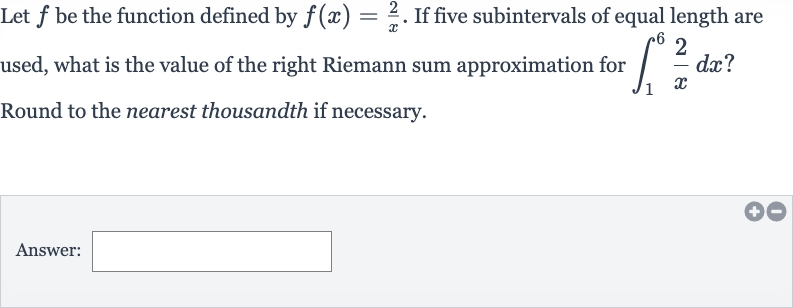Full solution
Q. Let be the function defined by . If five subintervals of equal length are used, what is the value of the right Riemann sum approximation for ? Round to the nearest thousandth if necessary.Answer:
- Determine Subinterval Width: We are given the function and we need to approximate the integral from to using a right Riemann sum with five subintervals of equal length. The first step is to determine the width of each subinterval. The total interval length is . Since we are using five subintervals, the width of each subinterval () is .
- Find Evaluation Points: Next, we need to find the -values at which we will evaluate the function for the right Riemann sum. Since we are using the right endpoints and the first subinterval starts at , the -values will be , , , , and .
- Evaluate Function: Now we evaluate the function at each of these x-values:
- Calculate Rectangle Areas: We then multiply each function value by the width of the subintervals () to get the area of each rectangle in the Riemann sum:Area at : Area at : Area at : Area at : Area at : $\(0\).\(333\) \times \Delta x = \(0\).\(333\) \times \(1\) \approx \(0\).\(333\)
- Sum Rectangle Areas: Finally, we sum the areas of all the rectangles to get the right Riemann sum approximation for the integral:\(\newline\)Right Riemann sum = \(1 + 0.667 + 0.5 + 0.4 + 0.333 \approx 2.9\)
- Round Final Result: We round the result to the nearest thousandth as instructed: Right Riemann sum \(\approx 2.900\)

